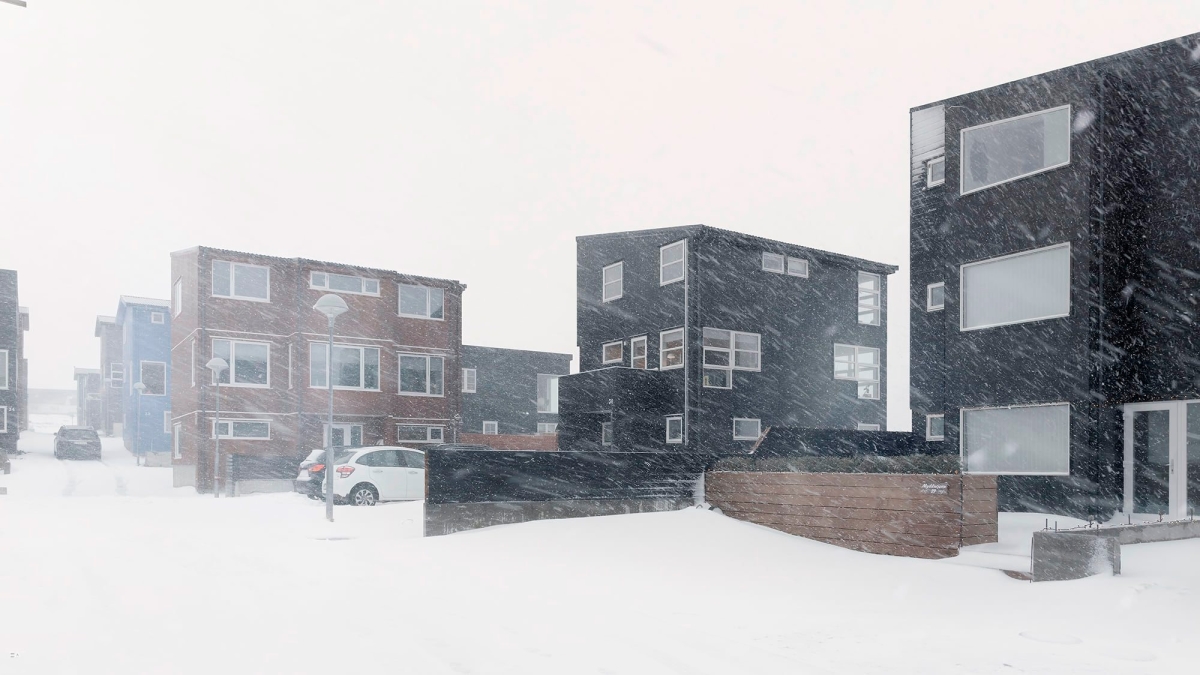Construction
15. Mar 2023
1,524 new buildings and 5,609 more people in eight years

The number of new dwellings – i.e. detached and terraced houses as well as flats – has increased by 1,524 since 2015. The population increased by 5,609 over this period.
Since there is no complete housing register in the Faroe Islands, public energy supplier SEV’s register of new connections to the electricity grid is used as an indicator for the number of new dwellings. Up to and including 2008, all new dwellings were registered as detached houses. Since 2009, however, new dwellings have been classified into detached houses, terraced houses and flats. The graph below illustrates the significant changes in the types of dwellings that are built.
[px-graph-1]
In 2009, the number of new dwellings began dropping sharply, going from 274 in 2009 to 71 in 2014. In 2017, the number of new dwellings started rising again, reaching 331 in 2022.
The types of new dwellings have also changed in this period. Flats and terraced houses now make up a majority of new dwellings. In the past eight years, the number of new dwelling houses totalled 652, compared to 872 new terraced houses and flats.
New dwellings by district
The graph below shows the number of new dwellings by district from 2015 to 2022. It shows that a vast majority of new dwellings are built in Streymoy, the most populous district with the highest population growth. It also shows that Streymoy has the highest number of flats relative to dwelling houses – twice as many flats as dwelling houses. The opposite trend can be seen in Eysturoy, where there are more than twice as many flats and terraced houses as there are dwelling houses.
[px-graph-2]
The table below shows the number of new dwellings per region. Of the 1,524 new dwellings, 988 (65%) are in the Streymoy district. For comparison, 3,045 (54%) of the total population growth of 5,609 was registered in Streymoy.
The rest of the country thus represents 35% of new dwellings and 46% of the population growth in the past eight years.
New dwellings and population growth
As noted earlier, the number of new dwellings has not kept up with the rapid population growth in the past eight years. The graph below compares these two figures, with an index figure of 100 set for 2009. It shows that the population figure was relatively flat up until 2015 when it started rising. The opposite applies to the construction of dwellings, which up until 2020 did not keep up with the population growth. In other words, the housing shortage has worsened every year in this period.
Since there is no complete housing register in the Faroe Islands, public energy supplier SEV’s register of new connections to the electricity grid is used as an indicator for the number of new dwellings.
Up to and including 2008, all new dwellings were registered as detached houses. Since 2009, however, new dwellings have been classified into dwelling houses, terraced houses and flats.
This is not a complete account of the ratio between dwelling houses and flats. There are examples of large apartment buildings that only have a single electricity meter registered for the entire building.